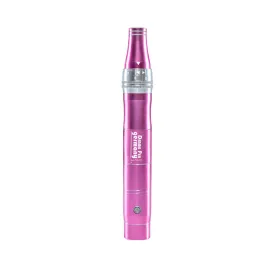DermaPen CurePro System / Derma Pen including multifunctional charging station
In stock
- Promotional price -
Highly modern microneedling pen with LED display
Opens microchannels in the skin and improves the absorption of active ingredients
Promotes natural collagen and elastin production
6 speed settings and adjustable needle length from 0-3 mm in 0.25 mm increments
Charging and storage station including disinfection device
Scope of delivery:
1x DermaPen CurePro main device
1x type C plug-in battery
1x charging station with disinfection tray
1x power supply
2x Magnetic rechargeable batteries
2x microneedling attachments
Highly modern microneedling pen with LED display
Opens microchannels in the skin and improves the absorption of active ingredients
Promotes natural collagen and elastin production
6 speed settings and adjustable needle length from 0-3 mm in 0.25 mm increments
Charging and storage station including disinfection device
Scope of delivery:
1x DermaPen CurePro main device
1x type C plug-in battery
1x charging station with disinfection tray
1x power supply
2x Magnetic rechargeable batteries
2x microneedling attachments
£84.54
£132.36
84,54 £ pc









